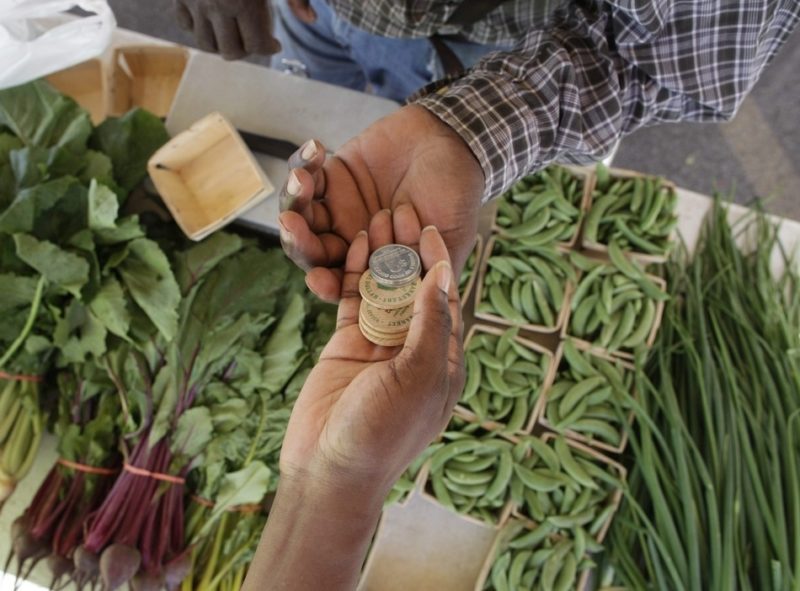
Share On Social!

More programs that double Supplemental Nutrition Assistance Program (SNAP) benefits at local farmers’ markets are coming to communities everywhere. In New York, where almost 20% of residents are Latino, a Double Up Food Bucks program is spreading across the western half of the state.
The idea is simple. When a SNAP recipient swipes their card at the farmers’ market EBT machine, they are given tokens worth double their dollar amount for folks to use on fresh, healthy foods.
Double Up Food Bucks are limited to fruits and vegetables sold by participating farmers at designated farm markets, said Lisa Tucker, co-founder and executive director of the Field & Fork Network and food systems educator with Cornell Cooperative Extension of Niagara County.
“We’re hoping that instead of spending their SNAP benefits at the corner store on pop and chips that people will go to the farmers’ market,” Tucker said, “and not only will they double their money, but they’ll buy fresh fruits and vegetables.”
The specific seven markets were chosen because they have a significant percentage of shoppers on SNAP assistance, including senior citizens, the disabled, the unemployed and the underemployed, and already had EBT machines set up.
A total of $364 million in SNAP benefits went to residents in the three Western New York counties where Double Up Food Bucks is being launched, said Cheryl Thayer, who also helped launch the program in the region. She leads the Cornell Cooperative Extension agricultural economic development team in 16 counties west of Ithaca and Tompkins County.
“We’re hoping to expand into more markets and more counties next year,”Thayer said. “Ultimately, we’d like to see the program go statewide.”
By The Numbers
1
Supermarket
for every Latino neighborhood, compared to 3 for every non-Latino neighborhood



